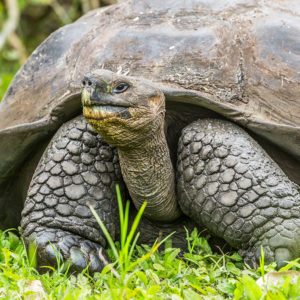A little boy was taken to the Staten Island (N.Y.) Zoo where he was enthralled to ride Jalopy, a Galapagos tortoise.
Jalopy became a favorite. But then one day the giant tortoise wasn’t there, and the little boy learned she had cancer and had been taken to Arizona for radiation treatment.
“I had never heard of radiation,” said Dr. James S. Welsh, professor of radiation oncology at Loyola University Medical Center in Maywood, Illinois. But his love of that tortoise was enough for him to devote his life to radiation therapy.
Now Welsh is in the vanguard of doctors who hope to save lives by using radiation as a therapy for patients with COVID-19 — and possibly as a therapy for Alzheimer’s, arthritis and other diseases where inflammation plays a role.
Inflammation is present when the body’s immune system mobilizes to fight disease or injury. The problems come when the immune system, according to Welsh and other doctors I have interviewed, goes “haywire.”
Radiation can’t cure COVID-19, Welsh explained, but it can be used to reduce the acute inflammation, known as cytokine storm. This causes a flooding of the lungs and is what kills most COVID-19 patients.
Using very low doses of radiation to fight respiratory inflammation isn’t new: It was how viral pneumonia was treated more than 75 years ago, before the perfecting of a battery of drugs that took over.
Radiation was highly effective against viral pneumonia, with success rates recorded at 80 percent or better. Antibiotic drugs combined with growing public antipathy to radiation in all forms took it off the pneumonia therapy list.
But now it appears to be back-to-the-future time for radiation.
Welsh says that a patient about to enter acute respiratory distress syndrome (ARDS), which kills many COVID-19 patients, can be treated with low-dose radiation to clear the lungs. Afterward, the patient can return to the ward to get treatment with antiviral drugs. No ICU, no ventilator, no long-term scarring of the lungs.
“Radiation could be used with a drug like remdesivir or another drug, like steroids. But it is my opinion that radiation will prove superior to dexamethasone or other steroid medicines,” Welsh said in an interview with me on “White House Chronicle,” the PBS television program.
A few clinical trials of low-dose radiation therapy for COVID-19 have begun in the United States and six other countries, including Canada and the United Kingdom.
“Although peer-reviewed results have yet to be published, preliminary data seem very encouraging, and certainly justify the siting of a proposed clinical trial here,” said Welsh, referring to the Hines VA Hospital in Chicago, where he is the chief of radiation therapy. He hopes to launch a clinical trial there in weeks.
The radiation doses for COVID-19 treatment are extremely low. Welsh is planning to use 0.5 gray in his trial, but others use more, 1 gray or even 1.5 grays. Those are above X-ray doses, but well below cancer doses. Brain cancer and lung cancer patients get doses of 60 grays, with up to 80 grays for prostate cancer, Welsh said.
This doesn’t mean that there isn’t opposition.
Much of the concern over radiation is associated with the linear, no-threshold (LNT) model that posits that all radiation will have detrimental health effects even at minuscule levels, like normal background. This theory has been contested violently for decades by nuclear scientists, but it remains an undermining orthodoxy.
“Most people and physicians are not familiar with the potential application as an anti-inflammatory in infectious disease,” Welsh said.
Nonetheless, he believes the future beckons. When I asked him about the use of radiation in other diseases where inflammation was a factor, particularly Alzheimer’s and arthritis, he responded, “A definitive ‘yes.’ ”
The beauty of radiation therapy, according Welsh and others, is that about half the hospitals in the country have radiology departments and staff. Treatments for COVID-19 patients could begin almost immediately.
As to Jalopy, she died in 1983 at the age of 77. She was so popular over the 46 years she lived at the zoo that a bronze sculpture of a Galapagos tortoise was erected as a memorial.
And you might say, her memory radiates hope for the future.

